I love watching nature documentaries like those narrated by David Attenborough, but even more than that I love watching the natural wonders that surround me every day.
This post features a few of my favorite sightings from 2022.
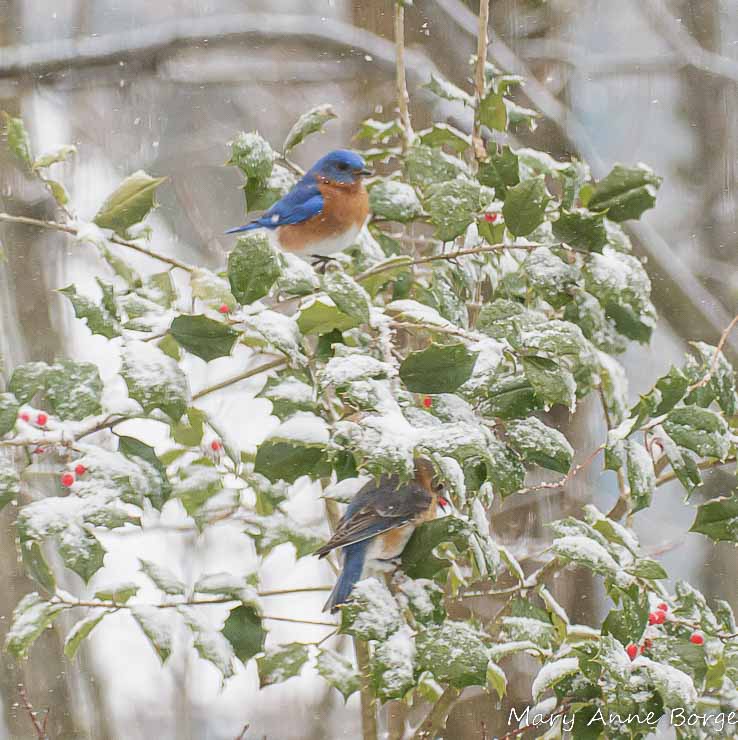
Eastern Bluebirds visit us more often in fall and winter than in spring or summer. In addition to holly berries, they love our heated birdbath, an important source of fresh water in the cold winter months.
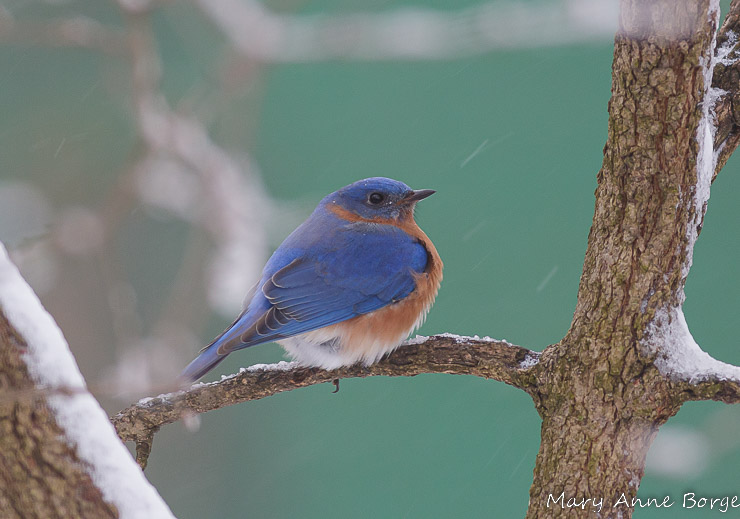

I always love it when an animal reminds me of the value of plants or other habitat that humans sometimes question. The male Northern Flicker (Yellow-shafted here in New Jersey) in the photo below did just that while enjoying Poison Ivy (Toxicodendron radicans) drupes, a berry-like fruit in the woods across from our house.

Bottlebrush Buckeye (Aesculus parviflora) is a constant source of entertainment when it blooms in mid-summer, attracting butterflies, Ruby-throated Hummingbirds, Hummingbird Moths, and many different bees and other insects to visit for nectar.
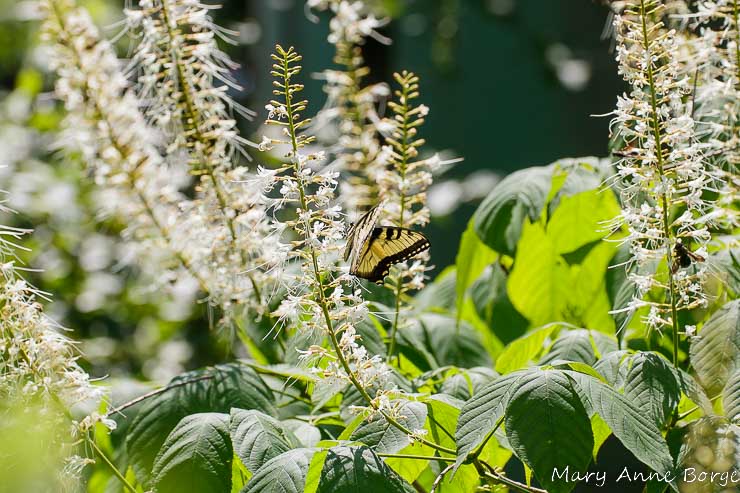
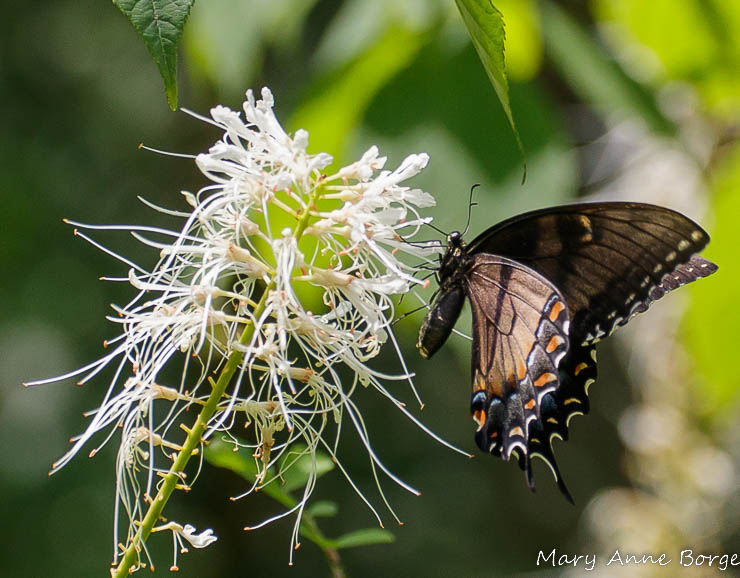
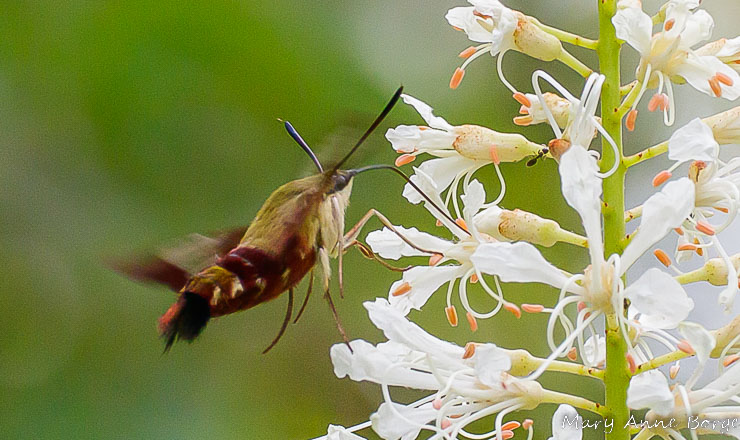
I understood why large long-tongued bees like Eastern Carpenter Bees visited the long, narrow, tubular flowers, but I puzzled over why so many tiny bees would buzz around the plant, since their anatomy isn’t a good fit for the flower size and shape.
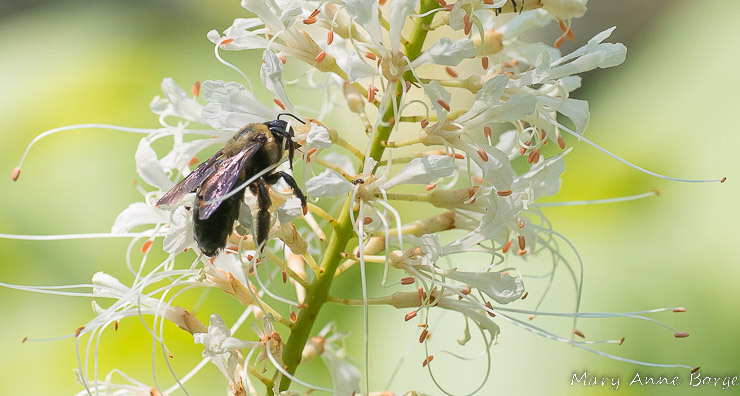

As I watched more closely, I saw tiny sweat bees (Halictid species) landing on the anthers (the flower part from which pollen is dispensed) to harvest pollen, both for themselves and to bring to their nests to feed their larvae. Bees and some flies may visit flowers for pollen, an important food source for them. Both their athleticism and creative thinking was impressive.

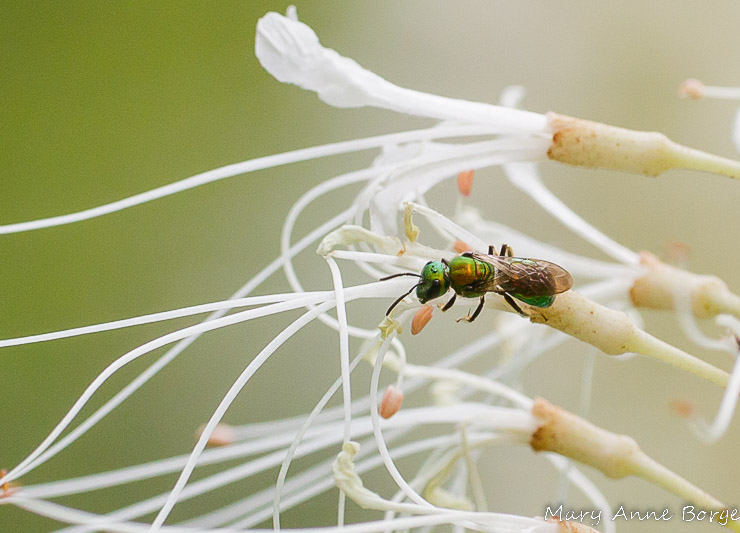
From a different access point, the sweat bees managed to drink nectar from the flowers, but without their bodies touching the flowers’ reproductive parts, so they weren’t likely to be doing the plant any favors in exchange for the nourishment provided.
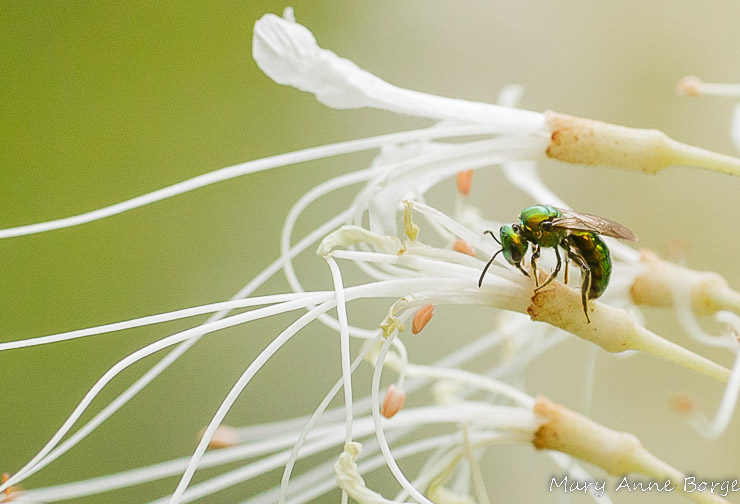
The starburst arrangement of abundant stamens (male reproductive parts) in the flowers of Shrubby St. Johnswort (Hypericum prolificum) are such a successful attraction to potential pollinators that this plant doesn’t waste any energy producing nectar.
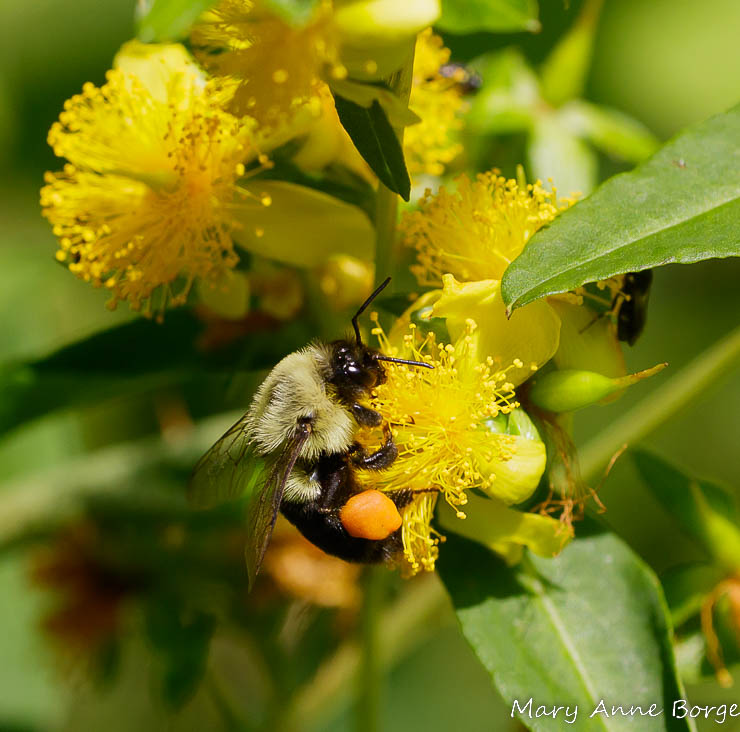
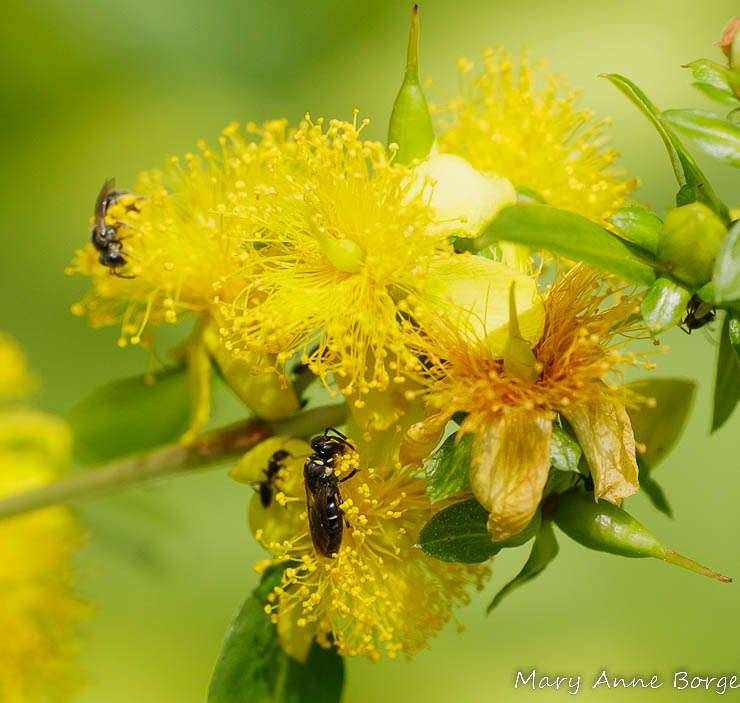
In late July I found a Striped Hairstreak in our habitat, my first time seeing this species. This butterfly was not only new for me, but it’s rare where I live in New Jersey. What was it doing in my garden? Striped Hairstreaks are typically found at forest edges where there are nectar sources, and with nearby access to its caterpillar foods – oaks, walnuts and hickories. We have nectar sources, and there are suitable caterpillar food trees nearby, so check and check.
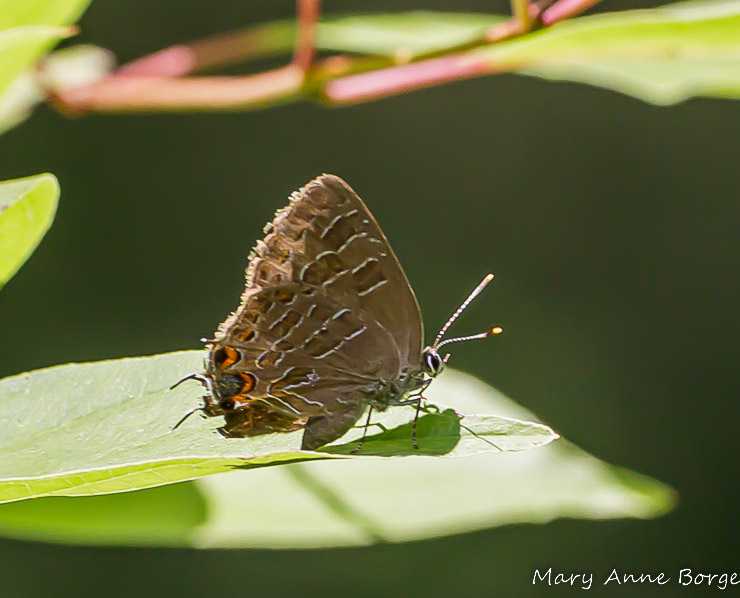
Catbirds arrived in spring and stayed through mid-fall. I saw them just about every day, usually in pairs, but sometimes in groups of four or more. Early one afternoon in August I witnessed a young Catbird being tutored on the proper way to take a bath.




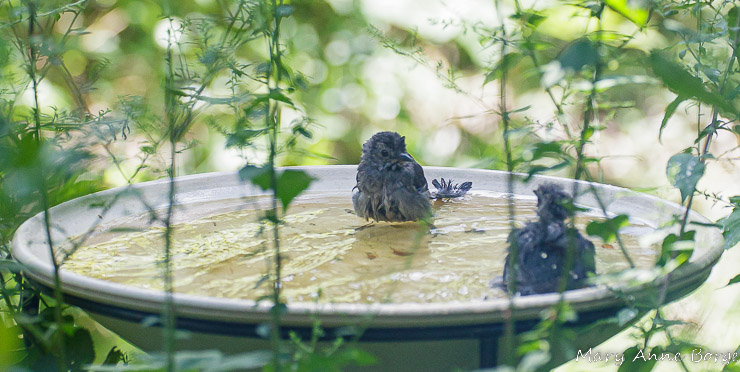
As Flowering Dogwood (Cornus florida), Winterberry Holly (Ilex verticillata) and Blackhaw Viburnum (Viburnum prunifolium) fruit ripened, the Catbirds were joined by migrating birds who passed through, using our habitat as a rest stop.

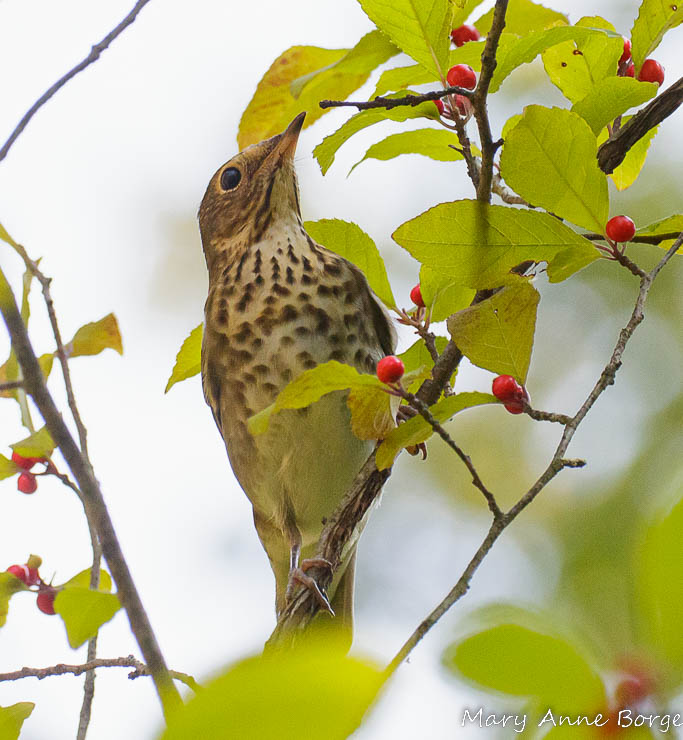
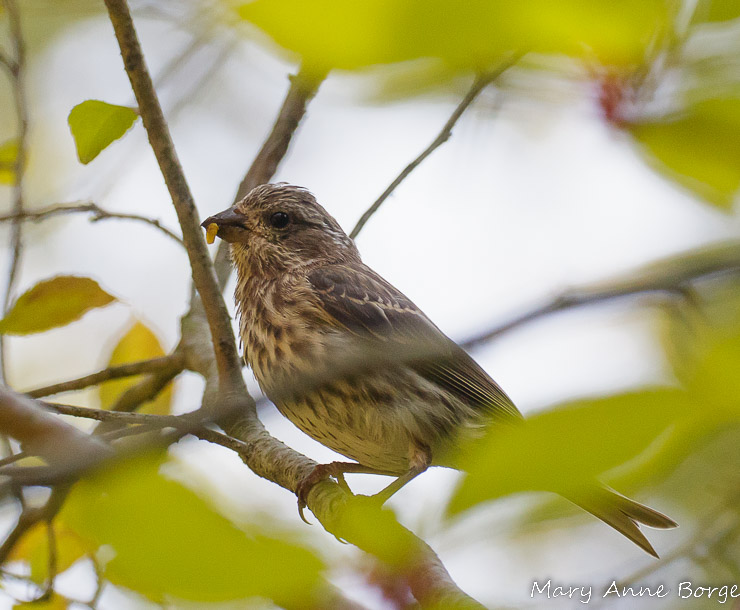
My favorite event was a visit from a Sleepy Orange in late September.
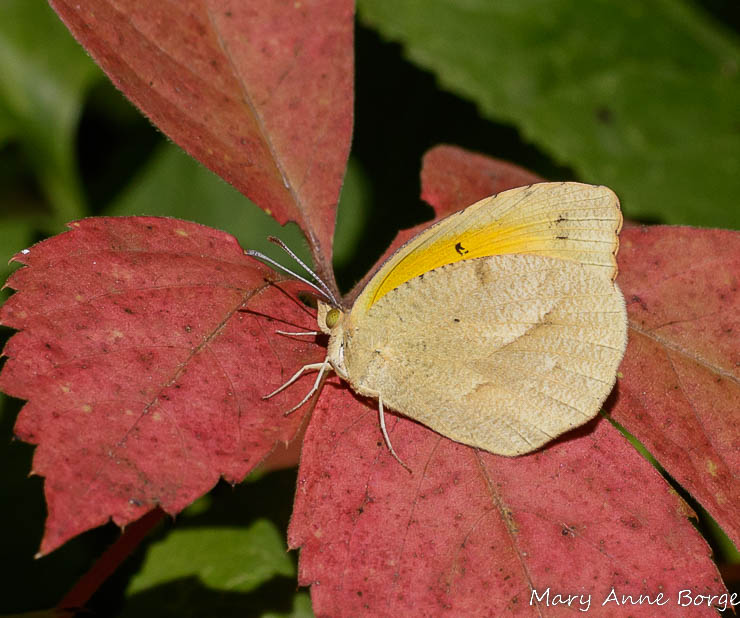
I love this butterfly for its pioneering ways. It’s mainly a tropical butterfly, but works to extend its range northward, positioning itself for continued survival in these days of climate change. Instead of the southward migration strategy for winter survival employed by many insect and bird species, some Sleepy Oranges fly north in late summer and fall. I imagine them getting together, looking for volunteers to fly north, saying, “See if you can survive the winter in a place where you can find nectar for yourself and a partner, and food for the kids (caterpillars). If you succeed, great! We’ve extended our range. If not, no big deal, we adults will all be dead by late spring anyway.” I’m not sure that’s what really goes on, but I like to pretend it is.

At one time the Sleepy Orange was thought to be unable to survive the winter any farther north than North Carolina. But they are now seen fairly often in central New Jersey and eastern Pennsylvania, and may have established year-round colonies. I first encountered a Sleepy Orange in 2006 at nearby Bowman’s Hill Wildflower Preserve, but this was my first sighting of the species in my own habitat. Very exciting! This year I had nectar to offer this thirsty butterfly, but to extend its range it needs the food its caterpillars require, Wild Senna (Senna Hebecarpa, S. marylandica) or Partridge Pea (Chamaecrista fasciculata). I didn’t have the necessary caterpillar food to offer this year, but we’ll have some Wild Senna by next summer.
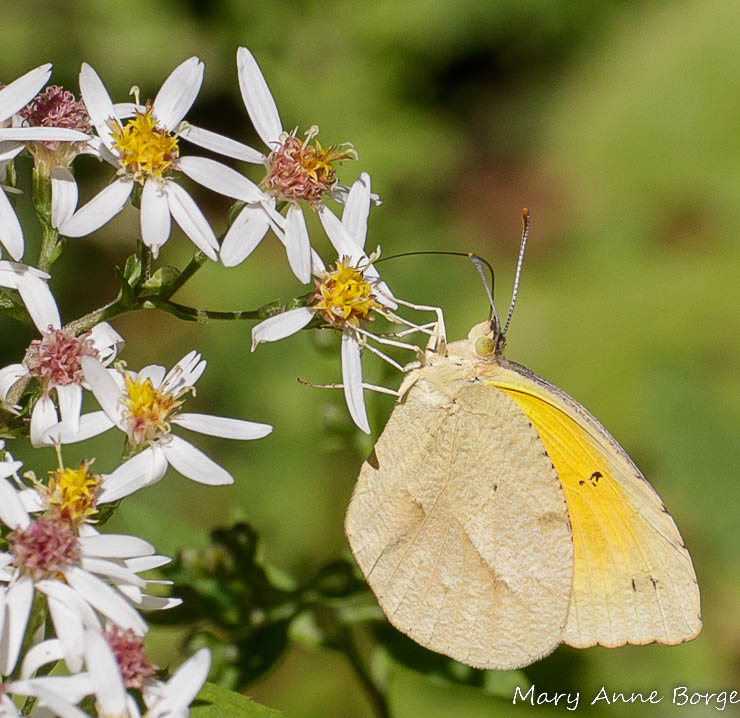
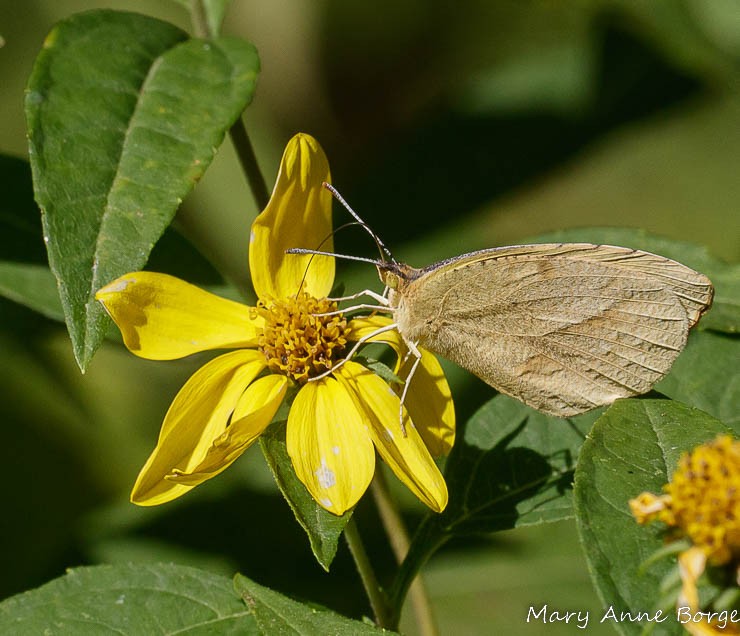
No matter what time of year, there is always something interesting to see right outside our doors. I have my desk facing the windows so I can be easily distracted by wildlife. Even on a winter day I may see Box Elder Bugs, Chickadees, Titmice, Carolina Wrens, White-breasted Nuthatches, Juncos, White-throated Sparrows, Red-bellied Woodpeckers, Downy Woodpeckers, Robins, Bluejays, Pileated Woodpeckers, Yellow-bellied Sapsuckers, Cedar Waxwings, or Brown Creepers. Some visit for fruit, but many are gleaning insects from the branches, bark and leaves of trees and shrubs, and from the fallen leaves on the ground.
Red-tailed, Sharp-shinned and Coopers Hawks sometimes stop by. On rare occasions, a Bald Eagle does a fly-over.
Want to see more wildlife? Make your own backyard an inviting habitat. Just provide the food birds, butterflies, bees and other animals need in the form of plants native to your region, and do less: leave fallen leaves in your planting beds, leave spent perennials standing, don’t use pesticides, herbicides or fertilizers, reduce your lawn if you can.
You don’t need to have a large property to host and see wildlife. We live in an end unit in a townhouse development with a homeowners’ association (HOA), adjacent to commonly owned natural areas that were preserved when the development was built more than 30 years ago. (Note that we leave the leaves, standing spent perennials, and don’t use pesticides.) Even a planter or a window box can bring wildlife within view.
Why travel thousands of miles away from home to see wildlife, when you can make exciting discoveries in your own backyard?

Related Posts
Sleepy Orange Butterflies are Back
A Wildlife, Family, and Pet-friendly Lawn
‘Will Work for Food’ – Extra-floral Nectaries
Where Do Winterberries Come From?
